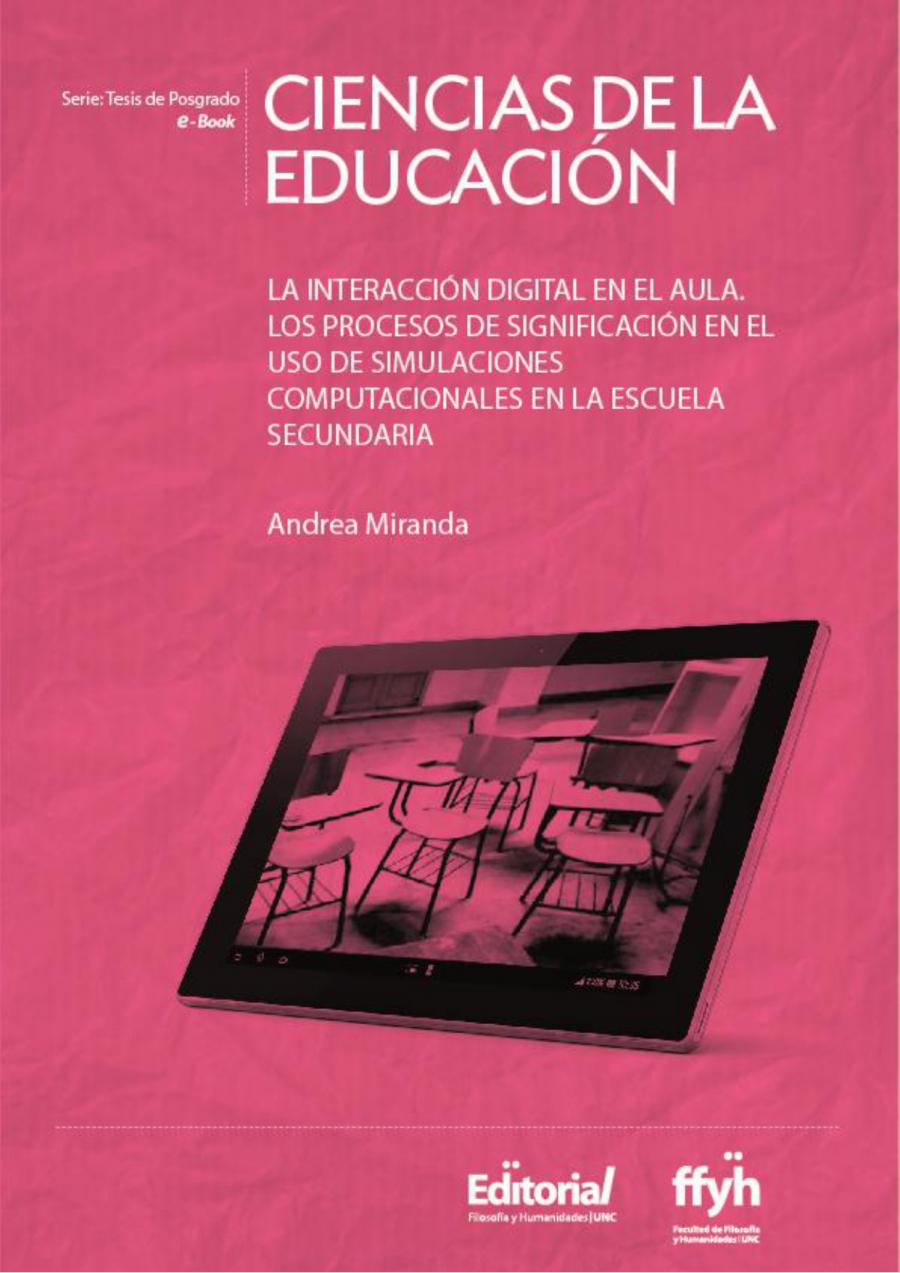Digital interaction in the classroom. The processes of meaning-making in the use of computer simulations in secondary school
Keywords:
education - technological innovations, educational technology - use in teaching, computer-assisted teaching, classroom interaction - digital resources, teaching practices - digital age, educational communication - virtual environments, technological resources in education, collaborative learning - digital toolsSynopsis
This research deepens our understanding of the interaction processes that are constructed when interactive digital tools are included in secondary school classrooms. In particular, it studies activities carried out in physics classrooms in which computer simulations are used.
Digital interaction is at the core of the analysis. The study focuses on understanding how digital interaction influences social interactions and content, while also being influenced by them. The narrative of the activity makes it possible to reconstruct the students' actions, what they do and say during the interaction.
The results indicate that simulations can become tools for conceptualizing physical phenomena to the extent that the limitations of the underlying computational model are identified. They also highlight the importance of teacher guidance and intervention in addressing the diversity and complexity of these learning situations.
When interacting with simulations, argumentative constructions are developed based on what they represent and the available conceptual references. Constructions that seek to confirm or refute conjectures engage digital interaction. Thus, the variety of interactive situations during the activity is directly related to the discovery and exploration of the tool's functionality. The exploration of disciplinary content is restricted by the understanding of the tool's functionality. In turn, the potential of interactive tools becomes visible to the subject the more they delve into their understanding of the school content.
The study of the argumentative sequences of a learning situation with interactive tools allows us to identify the stages in which these tools progressively acquire the character of an instrument. It is possible to ascertain the degree of appropriation of the tools and the factors that determine it.

Downloads
Published
Categories
License

This work is licensed under a Creative Commons Attribution-NonCommercial-ShareAlike 4.0 International License.


